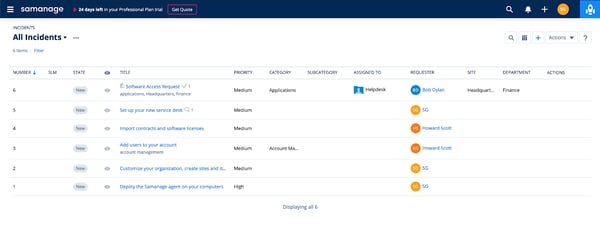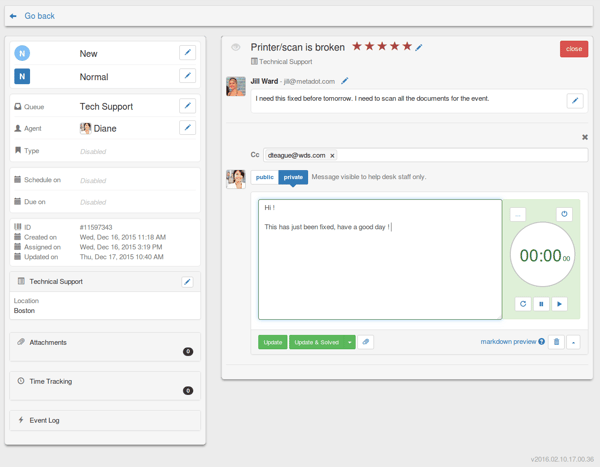[ad_1]
As your organization grows, IT support has to be more organized and efficient. Without a clear overview of what the problem is, who’s reporting it, and what its priority level is, it takes more time to resolve IT issues — as a result, operations will be bottlenecked within the company.
If your IT team is feeling these constraints, it may be time to implement an IT ticketing system. As a central point of contact, an IT ticketing system saves time by routing all service requests into a single help desk and implements workflows that prioritize and resolve issues. Departments across the organization can easily ask and get the help they need, enabling employees to focus on getting their work done.
In this post, we’ll highlight the must-have features to keep in mind when choosing your next IT ticketing system. Then, we’ll go over the best IT ticketing software options we’ve handpicked based on those standards. And, finally, we’ll provide a list of some other popular tools IT professionals use to improve their workflow.
But, first, here’s a table of contents to help you find exactly what you’re looking for.
Table of Contents
Helpdesk Ticketing System
A helpdesk ticketing system manages support inquiries that are filed within a company. When employees have issues with their tools, they’ll report their cases via the helpdesk ticketing system. The software then creates a digital record of the inquiry and notifies an IT professional for assistance.
Helpdesk ticketing systems formalized your internal support process. It makes it easier to keep track of open cases which reduces the time that your employees have to wait to get their issues resolved.
And, with a ticketing system, IT employees are automatically notified whenever a case is created. Your employees don’t have to physically make their way to the IT department whenever something breaks.
They can simply file a new ticket and receive a response from an internal employee almost immediately. This reduces any friction that can occur when employees are stacked against deadlines and need to work with your IT team to find a speedy resolution.
Additionally, another important benefit that a ticketing system provides is organization. Since you’ll have a digital record of every inquiry filed with your team, it makes it nearly impossible to lose or forget an open case.
And, some ticketing systems even have automated notifications that alert your team whenever a conversation on an open ticket goes silent. With safeguards like these, IT teams can work confidently knowing that they’re on top of their support inbox.
Now that we’ve looked at an overview of help desk ticketing systems, let’s review some of their benefits in the section below.
IT Ticketing System Features
An IT ticketing system helps your support team document technical problems using tickets. Designed to meet ITIL standards, the main goal of an IT ticketing system is to restore service operations back to normal as quickly as possible and prevent significant disruption to business operations.
Tickets contain details of service requests, their priority, status, and other relevant information. Rather than manually sifting through hundreds of messages, your team can organize and triage cases to resolve them quickly.
There are plenty of IT ticketing systems that may fit your needs, but there are some essential features you should look for during your selection.
1. Omni-Channel Support
Creating and submitting a service request should be easy. Users should be able to report issues through multiple points of contact and receive support via the channel they prefer most. These channels include email, social media, live chat, phone, walk-ups, and/or the help desk itself, depending on what works best for your users.
Omni-channel support ultimately enhances the support experience while keeping your IT team organized. Users don’t have to navigate away from their work, and incoming requests are handled within a central location.
2. Ticket Assignments
To successfully manage your ticket inflow, your team must know where and how to distribute tickets to the right people. Your ticketing system should have features that let you categorize, prioritize, and assign tickets to other employees.
For example, tickets can be categorized based on issue type, priority, and department.
Ticket assignments automate your team’s case distribution and assign service requests to reps who have more knowledge about a particular issue. This improves case resolution rates because your users will be connected with the employee who is best equipped to handle their problem.
3. Workflow Automation
Workflows are predefined processes that automatically complete common tasks and boost team productivity. They can be made up of macros, SLAs, automation rules, bots, and third-party integrations that handle menial actions so your team can focus on bigger, more complex issues.
For example, you can set an automation rule to tag issues containing specific keywords or notify an agent when an issue is assigned to them.
And, if your organization uses third-party apps for sales, finance, or human resources, integrating these tools can reduce the time spent searching for information about each issue.
4. Reporting and Analysis
Identifying the root cause of common issues allows you to solve crucial problems that affect daily business operations.
You can generate reports to analyze ticket progress and review team performance. This will help you better understand what IT spends most of its time on, what types of issues are reported, and how to improve the systems in place so that operations continue to run smoothly.
5. Knowledge Base
Customers love self-service, especially since 40% prefer using self-service options over direct support. This is because self-service empowers them to resolve issues they have with the product or service on their own. While that may sound counter-intuitive, often times this process is much faster for the user than it is to work with your IT team.
Knowing how busy your employees probably are, an internal knowledge base can give users the opportunity to find the answers and instructions they need on their own. Not all IT ticketing systems come built with this option, but it’s certainly a feature to consider as your organization continues to grow in size.
Help Desk Ticketing Software
Now that you know what to look for in an IT ticketing system, let’s take a look at our picks for the best options available this year.
1. HubSpot Help Desk and Ticketing Software
HubSpot’s Service Hub is a service management software that enables you to conduct seamless onboarding, power flexible customer support, and expand customer relationships. It delivers efficient and end-to-end service that delights customers at scale. Service Hub includes HubSpot’s Help Desk and Ticketing Automation Software.
Set up a company email alias for IT support, or a knowledge base for internal documentation. This ensures that service information is readily available for every member of your IT team.
By using HubSpot’s Service Hub, you’ll also have access to customer feedback tools to survey and proactively measure customer sentiment. Additionally, all incoming requests convert to tickets and are managed in a drag-and-drop pipeline.
Automation, bots, and integrations improve the tool’s flexibility and ability to meet your customers’ needs. And since it’s built on HubSpot’s all-in-one CRM platform, you’ll have more context for every customer conversation and all customer data will be up to date and centrally located.
Price: Free, $45/mo (Starter), $360/mo (Professional), $1200/mo (Enterprise)
2. Intercom
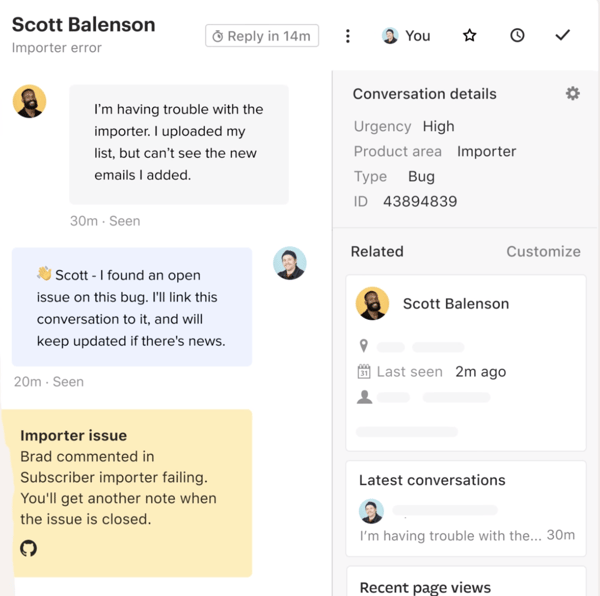 Intercom is a conversational relationship platform — it offers a conversational support tool to help you improve customer satisfaction with the tool’s Business Messenger as well as its rep, self-serve, and proactive support features.
Intercom is a conversational relationship platform — it offers a conversational support tool to help you improve customer satisfaction with the tool’s Business Messenger as well as its rep, self-serve, and proactive support features.
The Business Messenger allows you to provide personalized and efficient service without the need for phone or email. The Intercom Inbox is where you can manage and reply to conversations where they’re happening — whether on your website, social media, email, etc. — so you never have to leave the tool.
Lastly, you can automate the routing and prioritization of conversations that need the most attention by using Intercom’s assignment rules, ticketing workflows, and more.
Price: $59/mo (Start), $119/mo (Grow)
3. Samanage
Samanage is an ITSM (IT Service Management) platform that empowers support teams to collect, address, and deliver services consistently within your organization.
Employees can quickly submit requests and report incidents through a customizable service portal. You can also set automation rules for ticket routing or service approvals, and establish processes for problem management, asset management, change management, and more.
Samanage lets you document and publish common processes and best practices in a knowledge base. Users can then reference these articles to solve problems on their own, and agents can insert them into their responses for faster resolution.
Price: $19/mo (Team), $29/mo (Business), $69/mo (Professional), $89/mo (Enterprise)
4. HappyFox
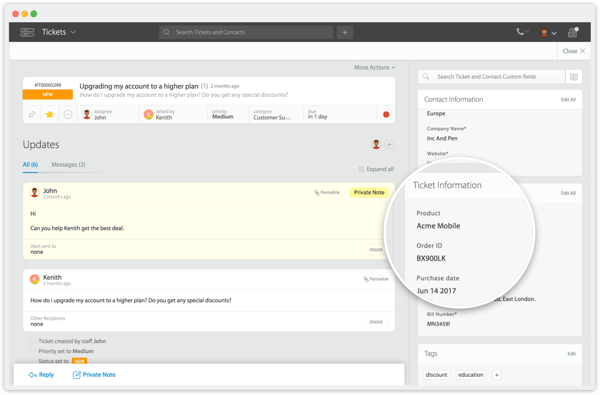
HappyFox lets agents receive and create tickets via email or through a customizable support center, so you can manage issues regardless of where they were reported.
Tickets are displayed on the “Ticket List” page, with layout options like “Card View” or “Kanban View” so your agents have a better understanding of the current workload.
If you adopt the premium plan, HappyFox lets you create and manage assets within your organization, while linking them to tickets when relevant.
Price: Request pricing.
5. ProProfs Help Desk
ProProfs Help Desk offers a Round-Robin ticket assignment feature that ensures that support tickets are evenly distributed among agents and departments. With shared inboxes, all your customer-facing email accounts (e.g. sales@, support@, help@, billing@, etc.) can be clubbed together, allowing agents to work in sync.
With a simple user interface, agents can attach files to support tickets, leave internal notes, and resolve complex tickets using parent-child ticketing. Internal integrations, such as ProProfs Live Chat, Knowledge Base, and Survey Maker can help you offer a 360-degree support experience and gauge customer delight using CSAT and NPS surveys.
Moreover, with this tool, you can closely monitor individual as well as team productivity, measure performance against SLAs, track ticket response, ratings, and handling time.
Price: Free, $10/mo (Essentials), $15/mo (Premium)
6. Jira Service Desk
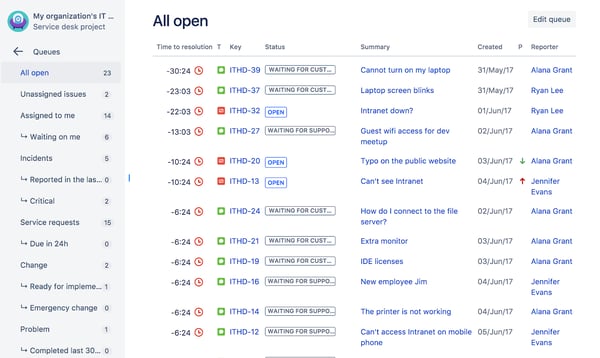
Jira Service Desk enables your support team to create multiple projects for organizing and processing requests. If you find yourself providing support for several products, areas, or departments, you can create service desk projects for each topic, and have your users submit requests using their respective email addresses.
Jira works hand-in-hand with Confluence so you can build a knowledge base to house your internal documentation. Users can then self-serve and solve simple issues, allowing your agents to focus on solving more complex or urgent requests.
Price: Free, $20/mo (Standard), $40/mo (Premium), request a quote (Enterprise)
7. Mojo IT Helpdesk
Mojo IT Helpdesk integrates seamlessly with G Suite so you can build your IT help desk right on top of your Google domain. Once your help desk is up, users can submit service requests via their preferred channels, all of which are converted into tickets and managed in one central location.
Price: $29/mo (Professional), 149/mo (Enterprise), $300 (Enterprise GIGA)
8. Freshservice
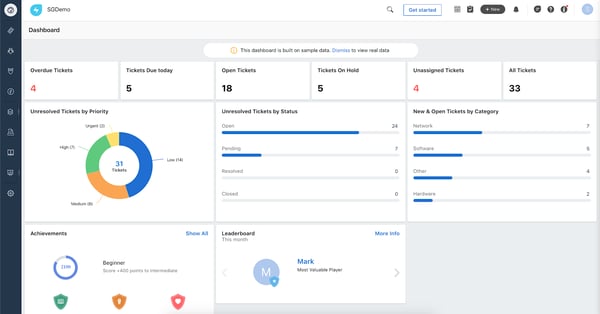
Freshservice by Freshworks is an ITSM service desk built to help support teams provide timely IT services. This includes incident management, SLA management, asset management, and self-service options.
The Freshservice dashboard displays a comprehensive view of team performance and helps you pinpoint opportunities to improve your service.
Price: $19/mo (Starter), $49/mo (Growth), $89/mo (Pro), $109/mo (Enterprise)
9. Zendesk
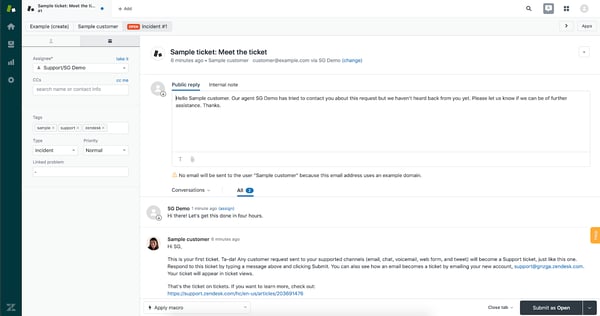
Zendesk can easily be set up as an IT service desk that reports incidents, events, problems, and service requests from multiple support channels.
You can even expand Zendesk’s functionality by integrating your IT help desk with apps and tools your team already uses. Your team can also track key metrics so you can make informed decisions about how to address common problems that impact service operations.
Price: $49/mo (Suite Team), $79/mo (Suite Growth), $99/mo (Suite Professional)
10. Vision Helpdesk
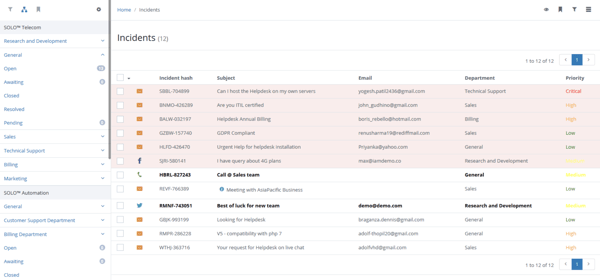
Vision Helpdesk can be configured with modules specifically for incident management, problem management, CMDB (configuration management database), and other services your IT support team provides.
To boost team performance, Vision Helpdesk lets agents collaborate within the help desk, gamify daily tasks, and implement task management to complete projects on time.
Price: $12/mo (Starter Help Desk), $20/mo (Pro Help Desk), $24/mo (Satellite Help Desk), $32/mo (Pro Service Desk), $48/mo (Ent Service Desk)
11. Zoho Desk
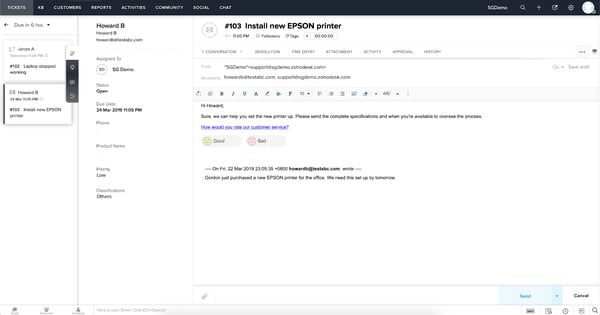
Zoho Desk equips your IT team with the tools they need to resolve tickets efficiently. If you’re currently using Zoho CRM for organizing user data, you can sync your database to Zoho Desk and have access to your users’ existing ticket history, activity, and happiness rating.
Price: Free, $14/mo (Standard), $23/mo (Professional), $40/ mo (Enterprise)
11. ServiceDesk Plus
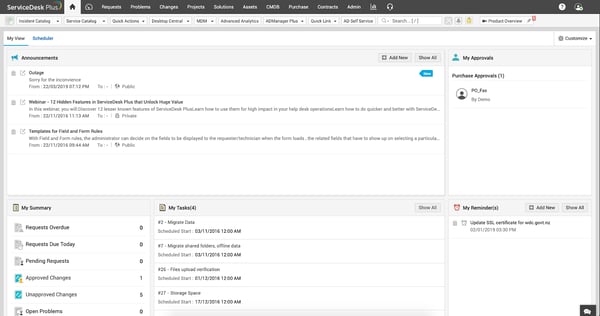
ServiceDesk Plus is an advanced IT ticketing system that includes options to use a cloud version or install it on-premises. ServiceDesk Plus offers large IT teams the flexibility to purchase add-ons for live chat, incident management, change management, asset management, and project management.
And, Service Desk Plus’s premium plans let agents provide customers with real-time solutions via remote access to the client’s desktop.
Price: Request a quote.
12. Jitbit
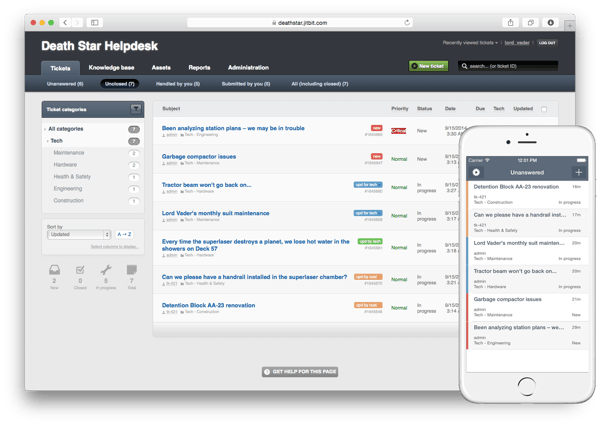
It takes seconds to set up an IT service desk with Jitbit. Whether you choose the hosted or on-premise version, Jitbit lets your team manage requests in real-time.
Ticket activity, messages, and attachments are accessible in a single view so you don’t have to constantly ping your teammates for more information. iOS and Android apps are also available so you can access the help desk and respond to tickets wherever you are.
Price: $29/mo (Freelancer), $69/mo (Startup), $129/mo (Company), $249/mo (Enterprise)
Whether you’re looking for an on-premises solution or a cloud-based service desk, you’re bound to find the right IT ticketing system software that fits your business’s needs.
Now, let’s look at a few more tools that IT professionals use every day.
1. CCleaner.png)
CCleaner is like the maintenance person for your IT system. It clears out old files that your software doesn’t use and frees up space on your hard drive so your other apps can operate faster. With its routine maintenance checks and repairs, CCleaner constantly ensures your team isn’t hindered by slow operating speeds, especially as your customer base continues to grow.
Price: Free download
2. Foxit PDF Reader

Foxit’s free PDF reader helps you read, annotate, and fill out PDF documents, regardless of their size or PDF type. This tool can save your team time if you have customers or employees submitting support tickets on paper or in person.
Rather than processing these requests by hand, simply upload the documents into Foxit and transfer your notes directly into your IT help desk.
Price: Request a quote.
3. Recuva
We all have had that moment when we’ve accidentally clicked “delete,” and thought we lost a file forever. Fortunately, Recuva can recover any files that you inadvertently delete so you won’t have to re-upload, or worse, recreate them. Recuva also has an advanced scanning tool so you can find files that were lost a long time ago, or after a computer crash.
Price: Free download
4. LastPass Password Manager
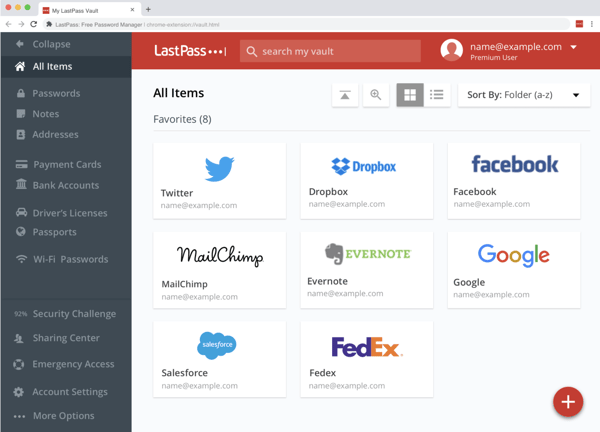
LastPass is like a universal remote for your apps and software. Rather than having to remember a password for each tool that your team uses, LastPass stores and fills in password credentials automatically. While your software is still secured by unique codes and encryptions, LastPass simply reduces the time your employees spend logging in and out of apps.
Price: Free, $3/mo (Premium), $4/mo (Families)
5. Dropbox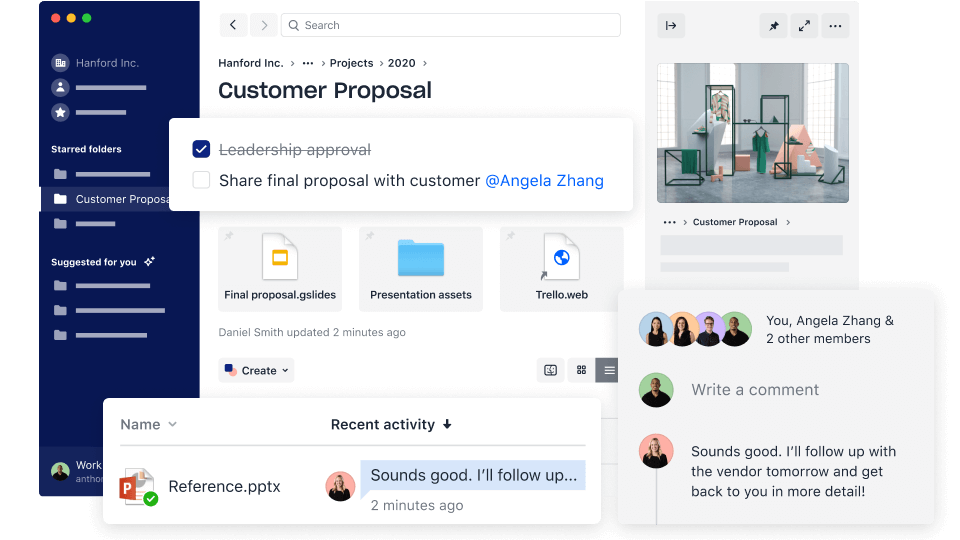
Dropbox is a popular tool that businesses use to share information internally. It creates a communal space where employees can upload and view documents created by their team or upper management. As more documentation is uploaded, Dropbox acts as an internal knowledge base, providing employees with informative resources and data about your business.
Price: $12.50/mo (Standard), $16.58 (Professional), $20/mo (Advanced), request a quote (Enterprise)
6. Microsoft Attack Surface Analyzer

If your IT team is running on Windows, you’ll want to add Microsoft’s Attack Surface Analyzer as you continue to install more apps and software. This tool monitors changes made to your operating system after a new installation is completed to ensure the new program or app is safe. That way, if you accidentally upload malware, the Surface Analyzer will spot the threat before it endangers your data or infrastructure.
Price: Free download
7. Zapier
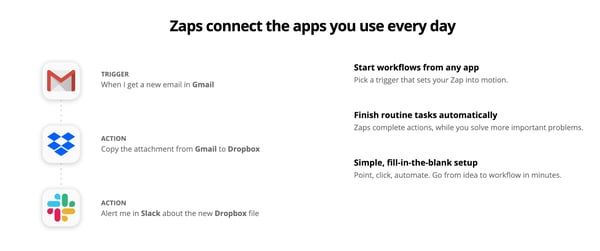
It’s always great to provide your IT team with new apps and software. But, what’s even better is when you can sync these programs together to create a unified workflow.
Zapier does just that by linking your software together with “zaps,” allowing you to transfer data automatically between applications instead of having to manually upload it.
Price: Free, $19.99/mo (Starter), $49/mo (Professional), $299/mo (Team), $599/mo (Company)
9. Atom

Sometimes it’s easier to create a new solution rather than buying an existing one. For these cases, Atom provides a text editor that reduces the time it takes to write basic code.
It comes with an autocomplete feature that anticipates the code you’re going to write and allows for live collaboration, so multiple team members can code on the same project at the same time. This is great for busy IT teams that may only devote a portion of their day to developing app-based solutions.
Price: Free download
10. Screen Recorder
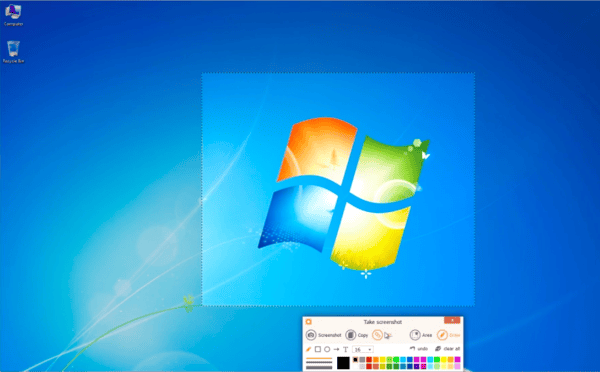
Software can be tricky to troubleshoot if both people aren’t working in the same room. The IT team can’t see what the customer or employee is doing, so it’s hard to verify if they’re following instructions exactly how they’re described.
With a screen recorder, you can reduce that margin of error by recording every step you take on your computer and sharing it via video with the customer or employee. That way, customers can see exactly what you’re doing on your interface before trying it on their own.
Price: Free download
Improve Customer Support With Help Desk Software
Help desk software and IT tools have the ability to make your customer service and support teams more efficient and effective when it comes to resolving customer challenges, collaborating with each other, and providing a delightful experience.
As a result of your remarkable customer service and support, your customers will be more likely to become loyal promoters of your brand.
Editor’s note: This post was originally published in June 2019 and has been updated for comprehensiveness.
[ad_2]
Source link



